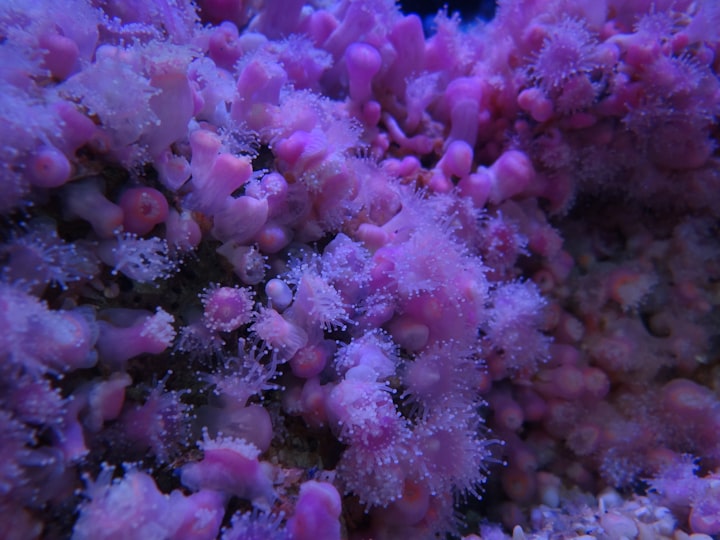The Unusual World of Parasites
Bizarre and Disturbing

Introduction: A World of Intriguing Parasites
In the intricate web of life on Earth, parasitism stands out as one of the most remarkable strategies for survival. Parasites are organisms that thrive by extracting resources from their hosts, often causing harm in the process. Astonishingly, it's estimated that anywhere from one-third to half of all life forms on our planet are parasitic in nature, though the true extent of their diversity and impact remains a subject of ongoing exploration. This article delves into the captivating world of parasites, uncovering some of the strangest and most unsettling adaptations they have developed to ensure their survival.
1. The Tongue-Biting Isopod: A Disturbing Intrusion
Among the most bizarre examples of parasitism is the case of the tongue-biting isopod. Belonging to the group of crustaceans known as cymothoids, these parasites have an unsettling habit of settling in a fish's mouth. The process begins with free-swimming male larvae searching for an available host fish. Once inside the fish's gills, the male larvae determine if the mouth is vacant. If it is, they move in and attach themselves to the fish's "tongue" – a bony structure called a basihyal. The isopod undergoes a transformation into a larger adult female, residing in the fish's mouth and nourishing itself by siphoning nutrients from the fish's bloodstream. Additional male larvae might also settle in the gills, making their occasional way to the mouth for mating. This unusual strategy, though intricate, has proven effective across various fish species, contributing to the isopod's success.
2. Trematodes: Manipulating Host Development
Trematodes, a type of flatworm, present a remarkable case of parasitic manipulation of host development. Ribeiroia, a genus of trematodes, infect amphibians, leading to limb deformities in tadpoles and young salamanders. These parasites have a complex life cycle involving three hosts: birds or mammals where eggs are deposited, snails that serve as intermediate hosts, and amphibians that serve as the definitive hosts. The larvae infect the skin of developing amphibians, interfering with limb development and resulting in deformities. Research indicates that increased deformities correlate with higher numbers of Ribeiroia in affected environments. The unsettling link between the parasite and host development reveals the intricate interplay of parasitic life cycles.
3. Parasitic Barnacles: Mind Control and Host Manipulation
Parasitic barnacles from the Rhizocephala group have evolved a particularly disturbing method of survival. These barnacles infest crabs, infiltrating their bodies to a significant extent. Female barnacles burrow inside their host, emerging externally as sac-shaped structures known as externas. These externas house the barnacle's reproductive organs and extend roots, connecting to the host's internal systems, including the nervous system. Remarkably, the barnacle manipulates the crab's behavior, triggering maternal instincts and ensuring the crab's caretaking behavior benefits the parasite's survival. This parasitic takeover even alters the host's physiology, rendering male crabs more female-like to enhance their nurturing tendencies.
4. Rafflesia: The Bizarre Parasitic Flower
Venturing into the realm of plants, Rafflesia, a parasite native to Southeast Asia, presents a floral anomaly. Unlike conventional flowers, Rafflesia lacks stems, roots, and leaves. Instead, its strand of cells infiltrates grapevines, siphoning nutrients from them. With no capacity for photosynthesis, Rafflesia relies entirely on its host. Notably, Rafflesia emits an odor akin to rotten flesh, attracting carrion flies for pollination. Recent research has revealed that Rafflesia engages in horizontal gene transfer, acquiring genes from grapevines. This unique form of genetic exchange allows Rafflesia to infiltrate its host more effectively.
Conclusion: Parasites' Astonishing Adaptations
The world of parasites is a testament to the diversity of life's strategies for survival. From tongue-biting crustaceans to manipulative flatworms and mind-controlling barnacles, parasites have evolved astonishing adaptations that both disturb and fascinate. These unusual and often gruesome tactics highlight the intricate relationships between organisms and their environments. As science continues to unravel the complexities of parasitism, these extraordinary adaptations serve as a testament to the astonishing array of life forms that inhabit our planet, revealing nature's remarkable ingenuity in the face of survival challenges.





Comments
There are no comments for this story
Be the first to respond and start the conversation.